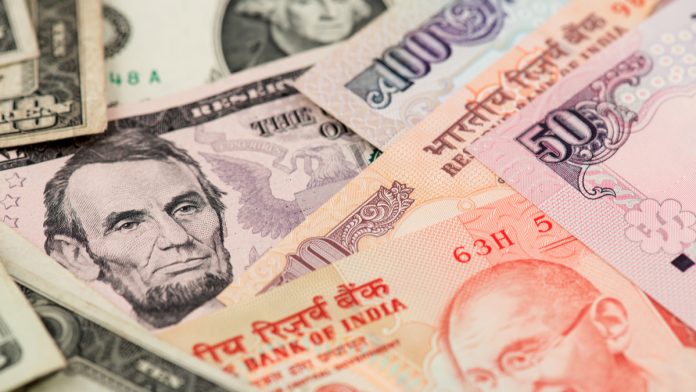- Indian Rupee (INR) falls for a third day
- Indian wholesale inflation cooled to 0.2% from 0.27%
- US Dollar (USD) rises versus its major peers
- US PPI inflation was hotter than expected
The US Dollar Indian Rupee (USD/INR) exchange rate is rising for a third straight day. The pair rose 0.04% in the previous session, settling on Wednesday at 82.82. At 17:00 UTC, USD/INR trades +0.14% at 82.93 and trades in a range of 82.80 to 82.94.
India’s wholesale price index rose at a slower pace in February than the previous month according to government data.
February wholesale prices rose 0.2% year on year compared with a 0.27% gain in January. This was below expectations of a 0.25% rise.
Earlier in the week, government data showed that Indian retail inflation held steady in February.
Elsewhere, stronger oil prices dragged on the rupee. Oil prices have risen around 3% over the past two sessions amid signs of a tightening oil market.
The US Dollar is rising across the board. The US Dollar Index, which measures the greenback versus a basket of major currencies, trades at +0.52% at the time of writing at 103.22, recovering from losses yesterday.
The US dollar is pushing higher against its major peers after a barrage of data and a particular focus on hotter-than-expected wholesale inflation figures.
Wholesale inflation as measured by the producer price index rose by 0.6% month on month in February up from 0.3% in January and was ahead of expectations of 0.3%.
Meanwhile, on an annual basis, PPI rose 1.6% after an upwardly revised 1% increase in January.
The data comes after hotter-than-expected consumer price inflation data earlier in the week and adds to evidence that the Federal Reserve is still struggling to tame sticky inflation which could mean that it’s in no rush to cut interest rates.
The market has downwardly revised expectations of a June rate cut to 60%. The data also raises questions over whether the Federal Reserve will be able to cut three times this year, as predicted in the December FOMC meeting.





